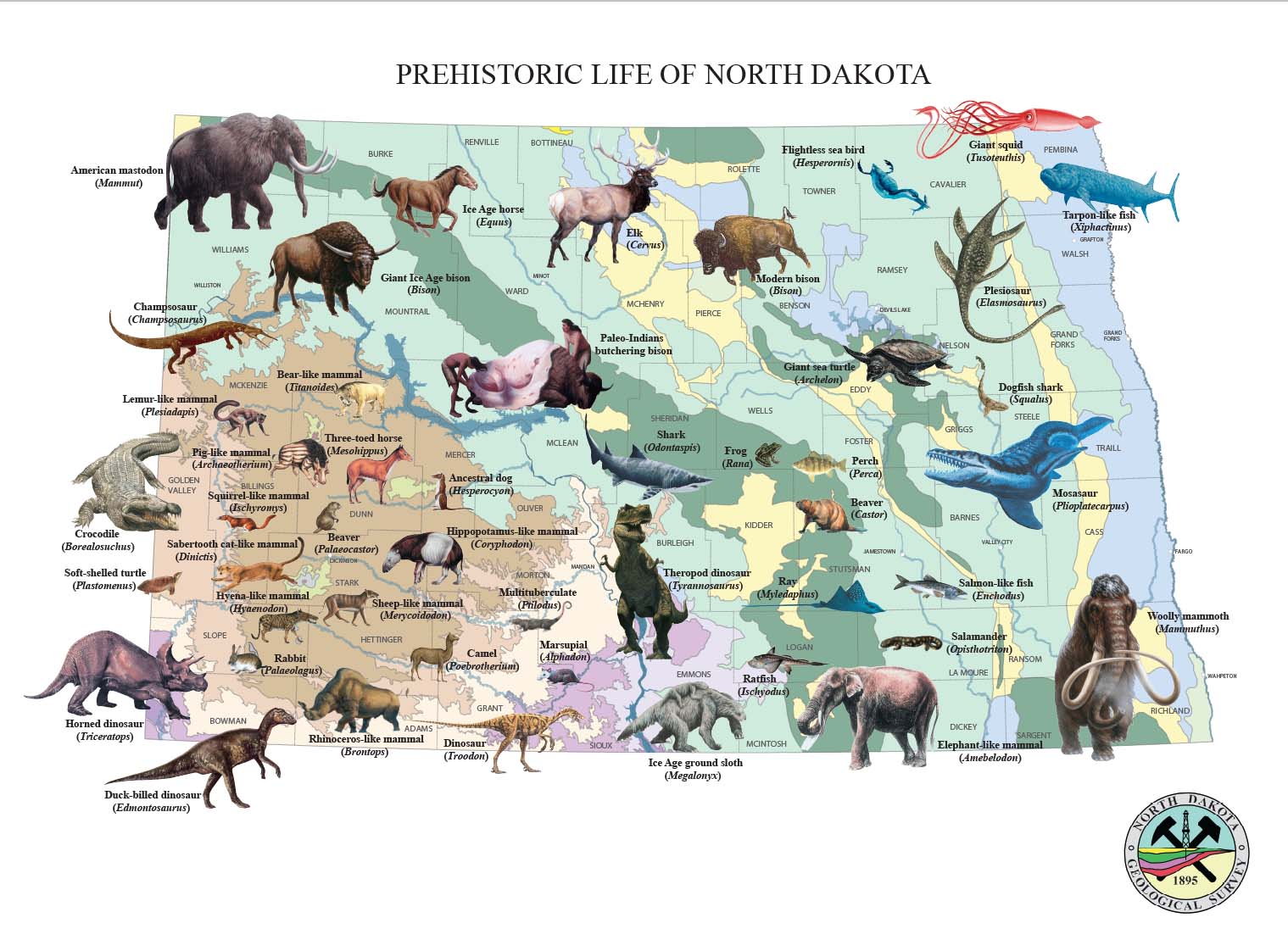The Cenozoic Era,• Most recent era
• Began about 65 million years ago
• “Age of Mammals”
• Divided into Tertiary and Quaternary Periods
• Era we live in now the most recent era, began about 65 million years ago. This era is divided into two periods, the Tertiary• Pronounced ter-she-air-ee
• Part of the Cenozoic Era
• Began about 65 million years ago
• The last of the inland seas drained away
• Rocky Mountains were formed in western United States
• Palm trees and tropical flowers grew well in North Dakota
• Coal formed during this period
• Camels, tiny three-toed horses, and rhinoceros lived in North Dakota
• About 50 million years ago North Dakota’s climate was becoming cooler and drier
• About 30 million years ago swamps were replaced by grasslands and Quaternary.• Pronounced kwat‑er-nair-ee
• Part of the Cenozoic Era
• Began about 1.8 million years ago
• “Ice Age”
• Glaciers formed and did not melt for thousands of years
• Mastodons and woolly mammoths lived in North Dakota about 11,000 years ago
• Period we live in now
Today, geologists have divided the Tertiary Period into two new periods—the Paleogene and Neogene. The Tertiary Period lasted about 65 million years ago to about 1.8 million years ago, a time-span of about 64 million years.
The Cenozoic Era is sometimes called the “Age of Mammals” because after the dinosaurs became extinct, warm‑blooded mammals took over. For the first several million years of the Tertiary Period, the weather was quite warm with sea water continuing to advance and recede every few million years. Sharks and stingrays lived in North Dakota seas at that time.

Figure 18. Prehistoric Life in North Dakota. This map shows reptiles, mammals, and other animals that once lived in North Dakota. To learn more about early life in North Dakota, go to https://www.dmr.nd.gov/ndfossil/poster/poster.asp (ND Geological Survey)


